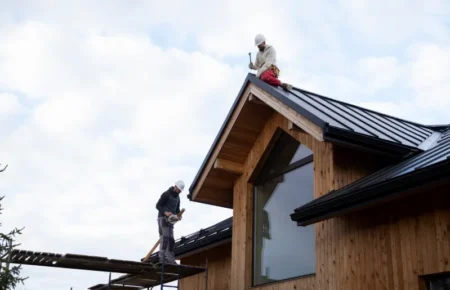 No one forgets the first time they see it — a small brown stain on the ceiling, a quiet drip in the middle of the night. It looks harmless. Manageable. A problem for “next weekend.”
No one forgets the first time they see it — a small brown stain on the ceiling, a quiet drip in the middle of the night. It looks harmless. Manageable. A problem for “next weekend.”
But that little leak is more than a plumbing annoyance. It’s a warning — the house’s way of saying, I’ve been holding this together for you, but I can’t anymore.
And yet, most people ignore it.
The Psychology of Ignoring the Drip
A leaking roof doesn’t start with water. It starts with denial.
We tell ourselves it’s “just condensation,” or “probably the gutters.” We close our eyes because fixing it means confronting something we don’t want to admit — that the roof, our home’s armor, has a weakness.
It’s not laziness; it’s avoidance. The idea of the roof failing feels personal, like the home itself is aging — or worse, like we’ve neglected something important. So, we do what humans do best: postpone.
The problem? Water never waits.
Water Is the Quiet Destroyer
Once water finds a way in, it doesn’t stop. It seeps through insulation, runs along beams, and hides behind drywall. You might not see it, but it’s there — silently feeding mold, warping wood, and corroding wiring.
By the time a ceiling drip appears, the damage has already traveled. What you’re seeing isn’t the beginning — it’s the middle.
That’s why roofing professionals often say, “If you can see the leak, it’s already late.”
And yet, most homeowners don’t act until the problem becomes visible.
The Cost of Waiting
Here’s the irony: people delay fixing a roof because they think it’ll be expensive — but waiting always costs more.
A small repair could be a few hundred dollars. Let it sit, and you might end up replacing entire sections of the structure for thousands.
It’s not just money, either. Moisture leads to poor insulation, which means higher energy bills. It weakens air quality, causes headaches, even allergies. A roof leak doesn’t stay in the roof — it spreads through your life.
The longer you wait, the more your home stops feeling safe.
Roofs Don’t Just Protect — They Communicate
A roof isn’t passive. It tells stories: about weather, time, and how a house has been cared for. Cracked shingles, soft spots, dark streaks — each one is a message. Most people never look up long enough to read them.
The best homeowners — the ones whose roofs last decades — aren’t the ones with the newest materials. They’re the ones who pay attention.
A yearly inspection, a quick check after storms, clearing debris from gutters — small acts that turn into big savings. Because roofs don’t suddenly fail; they slowly ask for help.
The Hidden Meaning of Maintenance
Taking care of a roof is really about something deeper — respect for your home.
It’s easy to fix things inside because you see them every day. But the roof, silent and distant, gets forgotten until it complains. That’s why leaks feel like betrayal — the part of the house you trusted most suddenly reminds you it needed care too.
And maybe that’s the lesson. The things that protect us — roofs, relationships, even health — rarely break all at once. They crack quietly first.
The Bottom Line
A leaking roof isn’t just about water; it’s about awareness.
Every drop that falls through a ceiling is a moment of truth — proof that ignoring problems doesn’t make them disappear, it just gives them time to grow.
So the next time you see a stain or hear that faint drip, don’t just patch it. Listen to it. Because that sound isn’t just a leak — it’s your home asking you to notice before it’s too late.
Picture Credit: Freepik
